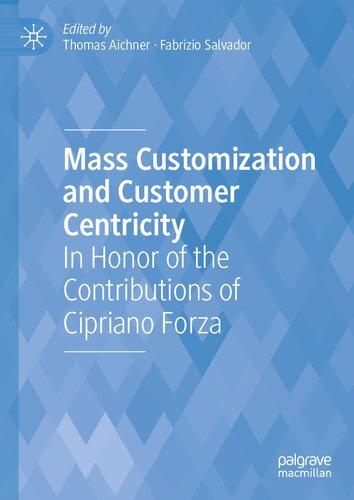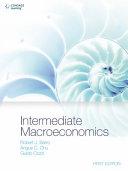Video Contents
For information on accessing the video clips, see How to Access the Video Contents near the end of the book.
Introduction
Clip Technique Description
48 Strategic Investment: From Procedure to Routine
Paper Passing (Back in Ten): Doug McCurry encourages students to pass in their papers faster and faster with Positive Framing.
Gathering Data on Student Mastery (Chapter 1)
9 No Opt Out Emotional Constancy Immigrant: David Javsicas stays steady at the helm and sticks with a student who declines to answer a question.
10 No Opt Out Negative Five Halves: Derek Pollak solicits help from the class when a student is very near to a correct answer.
11 No Opt Out Cold Call, Do It Again Little Brown Insects: Jamie Davidson gets a student to improve her expression in reading after another student models what it means to “ snap. ”
12 No Opt Out Targeted Questioning, Culture of Error
13 Right Is Right
Clever Fox: Shadell Purefoy (Noel) asks a student to repeat a correct answer after she's unable to answer the first time.
Fabric: Grace Ghazzawi holds out for an all-the-way-right answer.
14 Right Is Right Aunt Alexandra: Maggie Johnson pushes students to use precise language to describe a particular scene.
15 Right Is Right Positive Framing
Volume: Jason Armstrong holds out for a thorough definition of volume after students present formulas and partial definitions.
16 Stretch It Well Said: Art Worrell stretches the original student and then begins stretching other students to build a rigorous classroom culture.
17 Format Matters
“Gots to Be?”: Darryl Williams actively reinforces the language of opportunity by correcting informal phrases.
18 Format Matters Hither: Beth Verrilli asks a student for more collegiate language.
Lesson Structure (Chapter 5)
Clip Primary Technique Additional Techniques Description
19 Control the Game Control the Game: Jessica Bracey keeps durations short and unpredictable, moving the reading around the room to involve lots of students.
20 Control the Game Eyes In: Eric Snider balances student reading with his own modeling to build a culture of expressive reading.
21 Circulate Read and Annotate: Domari Dickinson and Rue Ratray demonstrate the fundamentals of Circulate.
Pacing (Chapter 6)
36 Call and Response Read to Us: Jennifer Trapp uses Call and Response to reinforce note-taking skills, grammar rules, and difficult pronunciations.
37 Pepper Cold Call Amendments: Art Worrell Peppers his classroom with questions about constitutional amendments.
Building
Ratio Through Writing (Chapter 8)
38 Everybody Writes
39 Everybody Writes
Troy: Gillian Cartwright sets up rigorous student-driven discussions with eighteen minutes of pre-thinking in writing. Yes, eighteen minutes!
Sophisticate It: Rachel Coffin ups the ratio in her classroom by challenging students to complete a sentence that begins with a complex starter.
40 Everybody Writes Romeo and Juliet: Lauren Latto teaches her students to sustain their focus in writing for longer periods.
41 Show Call Beautiful Formula: Paul Powell normalizes the process of “good to great” and sends a very clear message about accountability for written work by Show Calling exemplary work.
42 Show Call Culture of Error
Boxes: Katie McNickle Show Calls a number of different students' work to show different approaches to solving the same problem.
Building Ratio Through Discussion (Chapter 9)
52 This clip demonstrates what a culture of high behavioral expectations looks like at maturity.
Perimeter: Erin Michels demonstrates a number of high behavioral expectations in a lesson using “triangulous units.”
53 100%, Part 1: Radar/Be Seen Looking Grab Bag: Rachel King moves to Pastore's Perch and scans the room at the moment she wants to monitor her class more closely.
54 100%, Part 1: Radar/Be Seen Looking Crisp Sound of a Rip: Patrick Pastore demonstrates effective use of Pastore's Perch.
55 100%, Part 1: Radar/Be Seen Looking Pepper As a Decimal: Michael Rubino scans consistently and uses some “ moves ” to intimate that he is looking carefully.
56 100%, Part 2: Make Compliance Visible Show Me Show What You Know: Amy Youngman makes compliance visible with visible commands like “ pen caps on. ”
57 100%, Part 2: Make Compliance Visible Really Clever: Ashley Hinton scans the classroom even while she works with individual students. Her vigilance
58 100%, Part 3: Least Invasive Intervention
pays off with a happy classroom.
Montage: Ashley Hinton demonstrates a series of subtle nonverbal interventions used to keep her class focused.
59 100%, Part 3: Least Invasive Intervention I Need a Couple SLANTs: Alexandra Bronson subtly resets her whole class via a positive group correction.
60 100%, Part 3: Least Invasive Intervention
61 100%, Part 3: Least Invasive Intervention
62 100%, Part 3: Least Invasive Intervention
You Know Who You Are, and Puritans: Bob Zimmerli and Laura Brandt demonstrate different takes on anonymous individual correction.
Eyes on the Speaker: Jaimie Brillante demonstrates private individual correction by whispering to a student.
Don't Miss It: Jason Armstrong uses a whisper correction to make public corrections feel private.
63 100%, Part 3: Least Invasive Intervention Nonverbals Montage: Lucy Boyd uses a variety of different nonverbal interventions to keep her students hard at work during discussion.
For
Mike and Penny Lemov, my first teachers
Foreword
In 1983, a landmark US education commission famously declared that our “nation [is] at risk,” that “ a rising tide of mediocrity… threatens our very future,” and that we should consider our woeful K–12 performance a self-imposed “act of war. ” With confidence in established educational institutions at an all-time low, various states invited teachers and fellow citizens to offer new ideas, new approaches, and new schools that might help rebuild a broken system. The charter schools that emerged, beginning in 1991, were to serve as a research-and-development arm of public education.
Over the past quarter century, a new generation of idealists has answered that trumpet blast for reform, mostly in cities where the country has ignored millions of children who live in poverty and attend ineffective, inhospitable, unhappy schools. To build schools and classrooms of their own making, these reformers scaled the walls of bureaucracy, and then struggled with the very challenges that plagued their forebears. But, as pragmatic idealists, they didn't chase educational equity in the abstract. They pursued it relentlessly as instructional problem-solvers in a mission-driven learning community.
Suddenly, classroom doors for decades, sadly and oddly closed to outsiders and colleagues alike flew open. Looking for models to learn from and copy, legions flocked to the classrooms of the most skillful teachers, whose students were joyfully engaged, academically focused, working together as teams, and generating jaw-dropping results.
Of those who studied outlier classrooms, one tall, unassuming teacher and leader Doug Lemov camped out longer than all the rest. He saw the significance of instructional brush strokes that most of us either missed or didn't appreciate: how teachers circulated, engaged all students, targeted their questions, framed






